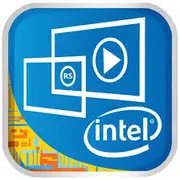Intel Core m5-6Y57

Intel Core m5-6Y57: Moderate Power for Mobility. Analyzing the Processor Years Later
April 2025
Introduction
The Intel Core m5-6Y57 processor, released in 2015, became part of the era of ultrathin laptops where the balance between performance and energy efficiency was critical. Even a decade later, devices on this platform remain in use, especially in the secondary market. Let's analyze whether this chip is still relevant in 2025, who it is suitable for, and what compromises it entails.
Architecture and Process Technology: Outdated Base, but Thoughtful Design
Cores, Threads, and Frequencies
The Core m5-6Y57 is built on the Skylake architecture (6th generation Intel) with a 14 nm process technology. It is a dual-core processor with Hyper-Threading support (4 threads). The base frequency is 1.1 GHz, with the ability to boost up to 2.8 GHz in turbo mode. For its time, this was a step forward in miniaturization, but today these specifications look modest compared to 5 nm chips like the Apple M3 or Intel Meteor Lake.
Integrated Graphics
The Intel HD Graphics 515 is an integrated GPU with 24 execution units and a frequency of up to 900 MHz. It supports 4K video through DisplayPort and HDMI, hardware decoding of HEVC, which is still useful for media tasks in 2025. However, for gaming or graphic work, the capabilities are insufficient: even CS:GO on low settings barely reaches 30 FPS.
Power Consumption and TDP: The Main Advantage
A TDP of 4.5 W is a key feature. This allowed for the creation of laptops without active cooling (e.g., MacBook 12" 2015), providing complete silence. In contrast, modern Intel Core U-series processors have a TDP of 15 W, while the Apple M1 ranges from 10 to 20 W (with significantly higher performance).
However, the low TDP limits performance: during prolonged loads, the frequency drops due to overheating, especially in compact chassis.
Performance: Only for Basic Tasks
Office Work and Multimedia
- Geekbench 6: 760 (Single-Core), 1298 (Multi-Core). For 2025, these scores are below average: for example, the budget Intel N100 (2023) scores around ~1100/3500.
- Real-world scenarios:
- Web surfing with 10+ tabs – possible lags.
- 4K video – smooth playback thanks to hardware decoding.
- Microsoft Office, Zoom – run stably, but background file conversions or rendering presentations take time.
Gaming
- Light games (Stardew Valley, Minecraft) – up to 40-50 FPS on low settings.
- Cloud gaming (GeForce NOW, Xbox Cloud) – the optimal solution if the internet is stable.
Turbo Mode: Short-term Boost
Under short-term loads (opening an application, rendering a PDF), the processor boosts to 2.8 GHz but returns to its base frequency after 10-15 seconds. In thin laptops without a cooler, this leads to rapid heating of the casing.
Use Cases: Who Is It Suitable for in 2025?
1. Students – for note-taking, online courses, PDF work.
2. Travelers – compact gadgets with battery life of 8-10 hours.
3. Secondary PCs – as backup devices for trips.
4. Office tasks – if heavy Excel work or graphics are not required.
Not suitable for:
- Freelancers using Photoshop or DaVinci Resolve.
- Gamers (except for cloud services).
Battery Life: Advantages of the Past
The average battery life of laptops with the Core m5-6Y57 is 8-10 hours under moderate load (brightness at 50%, Wi-Fi). This is aided by:
- Speed Shift Technology – rapid frequency adjustment under load.
- Power-saving modes – turning off unused components.
However, modern processors (e.g., Snapdragon X Elite) provide twice the performance at comparable battery life.
Comparison with Competitors
- Intel Core i5-1135G7 (2020): TDP 15 W, 4 cores, 8 threads. In Geekbench 6 – 1500/4500. Prices for used laptops – $300-400.
- AMD Ryzen 3 7320U (2022): 4 cores, TDP 15 W, Zen 2. Scores – 1200/3500. New devices start at $500.
- Apple M1 (2020): Single-Core – 2300, Multi-Core – 8000. On the second-hand market, MacBook Air M1 – $600-700.
Conclusion: The Core m5-6Y57 lags behind even budget models from the 2020s but wins on price (used ultrabooks – $150-250).
Pros and Cons
Strengths:
- Passive cooling (quiet operation).
- Sufficient for basic tasks even in 2025.
- Low cost on the secondary market.
Weaknesses:
- Low multi-thread performance.
- Lack of support for modern standards (Wi-Fi 6, Thunderbolt 4).
- Limited upgrade potential: RAM and SSD are often soldered.
Recommendations for Choosing a Laptop
If you are considering a device with the Core m5-6Y57 in 2025, pay attention to:
1. Device Type: ultrabook from 2015-2017 (e.g., Dell XPS 13 9350, Lenovo Yoga 900).
2. Screen: Full HD is preferable to 4K (less load on the GPU).
3. SSD: At least 256 GB, NVMe type will speed up operations.
4. Ports: USB-C with charging support is useful for versatility.
Tip: Check the battery condition. After 8-10 years, its capacity may have decreased by 40-50%.
Final Conclusion
The Intel Core m5-6Y57 in 2025 is a choice for those who:
- Seek a cheap (under $200) laptop for internet and office tasks.
- Value silence and compactness.
- Don't plan to use "heavy" applications.
Key benefits: minimalism, battery life, affordability. However, for future upgrades or professional tasks, it's better to consider more modern solutions, even from the budget category.
Basic
CPU Specifications
Memory Specifications
GPU Specifications
Miscellaneous
Benchmarks
Compared to Other CPU
Share in social media
Or Link To Us
<a href="https://cputronic.com/en/cpu/intel-core-m5-6y57" target="_blank">Intel Core m5-6Y57</a>